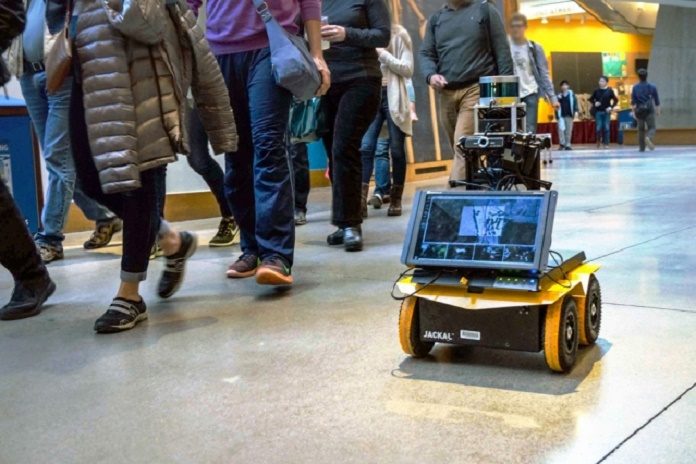MIT scientists have developed the robot rolls with socially aware navigation. The robot rolls are able to keep pace with foot traffic while observing these general codes of pedestrian conduct.
The robot looks like a knee-high kiosk on wheels.
Yu Fan “Steven” Chen hospitals.”
In order to advance it independently within the intensely trafficked condition, it must solve four primary difficulties: localization, perception, motion planning, and control. To solve this, scientists equipped the robot with off-the-shelf sensors, such as webcams, a depth sensor, and a high-resolution lidar sensor.
For localization, scientists utilized open-source algorithms to map the robot’s environment and determine its position. To control the robot, they employed standard methods used to drive autonomous ground vehicles.
Scientists have enabled the robot rolls to adopt an unpredictable pedestrian behavior while continuously moving with the flow and following typical social codes of pedestrian conduct. To do so, they used reinforced learning through which they performed computer simulations to train a robot to take certain paths, given the speed and trajectory of other objects in the environment.
They also incorporated social norms into this offline training phase. By doing this, they encouraged the robot o pass on the right and penalized way when it passed on the left. Thus, scientists were able to perform these training scenarios, which take extensive time and computing power, offline.
Once the robot is prepared in recreation, the specialists can program it to do the ideal ways, distinguished in the reenactments, when the robot perceives a comparative situation in this present reality.
In this way, the robot can continue rolling through a hallway at a typical walking speed of 1.2 meters per second, without pausing to reprogram its route.
Graduate student Michael Everett said, “We’re not planning an entire path to the goal. It doesn’t make sense to do that anymore, especially if you’re assuming the world is changing. We just look at what we see, choose a velocity, do that for a tenth of a second. We then look at the world again, choose another velocity, and go again. This way, we think our robot looks more natural and is anticipating what people are doing.”
Scientists test the robot in the busy, winding halls of MIT’s Stata Building. They found the robot is able to drive autonomously for 20 minutes at a time. It rolled smoothly with the pedestrian flow, generally keeping to the right of hallways, occasionally passing people on the left, and avoiding any collisions.
Everett said, “We wanted to bring it somewhere where people were doing their everyday things. For example, going to class, getting food, and we showed we were pretty robust to all that. One time there was even a tour group, and it perfectly avoided them.”
